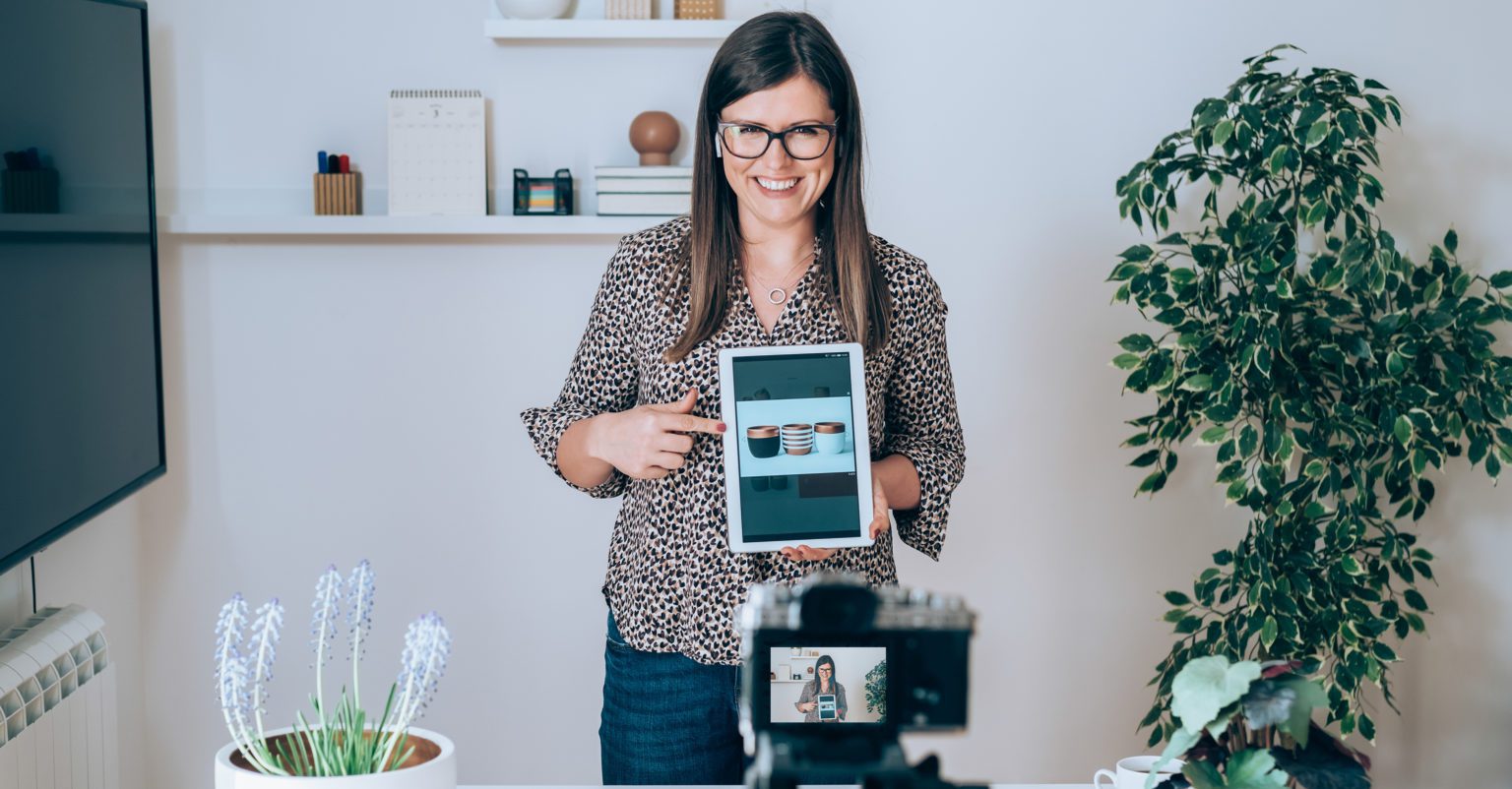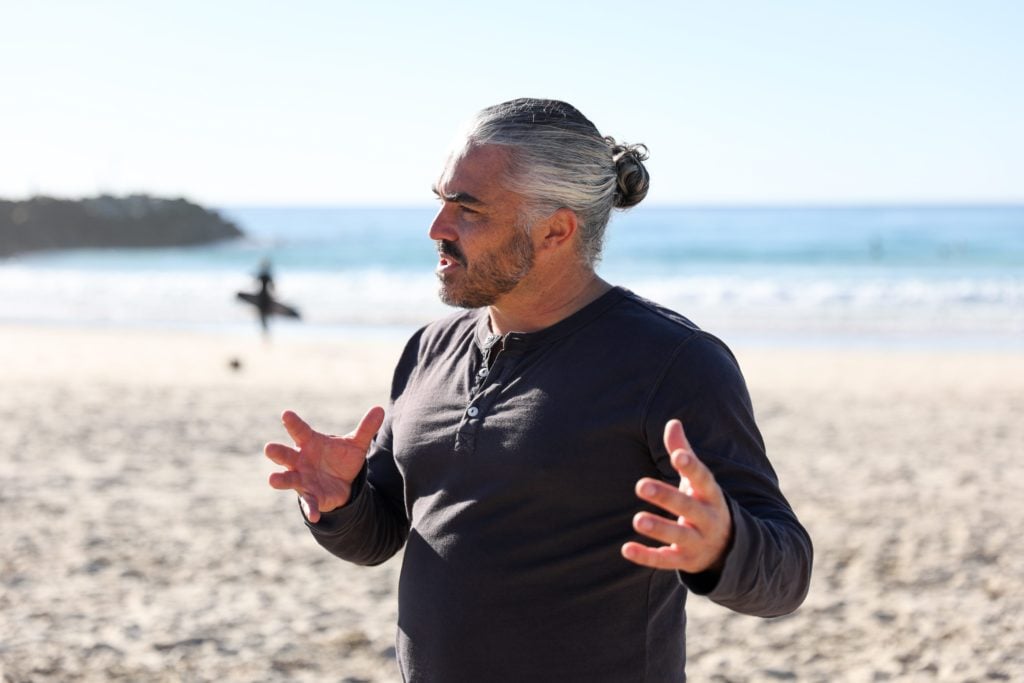Cameron Elliot, founder of Elevate Corporate Training, shares his transition from behind a desk to in front of a camera.
More than ever, consumers want to see video content from the brands they support. Video is a compelling way to humanise a brand, create viral moments, connect with more consumers and offer a wider variety of products.
But what if you don’t know your boom from your B-roll?
Don’t worry. With a few basic tools, a little confidence and some decent morning light, you’ll be calling “action” and “cut” like a pro in no time.
The shift to video
“We went from flying around Australia and Asia giving face-to-face training programs to quickly having to figure out how to deliver that same content online,” says Cameron Elliot, founder of Elevate Corporate Training, tapping into that common 2020 and 2021 experience – learning to speak into a mic.
“We shifted to teleconferencing to conduct training programs but saw that we could be using video to develop more products and services for our customers. We wanted to take it beyond just replacing face-to-face sessions with virtual sessions,” Cameron explains.
“So we started creating video content to sell to our clients then expanded into how-to videos for our YouTube channel, thought-leadership style pieces and results-oriented videos to attract customers.”
Elevate used those videos in social media marketing across LinkedIn, Facebook and Instagram.
“While we’d dabbled a little bit in embedding video content as part of our SEO strategy, video had never been on our agenda in a big way until COVID struck. Today, it’s a critical part of how we do business. There is so much potential to connect with people using video.”
Here are Cameron’s tips for creating video content with a business impact.
1. Know your purpose, your platform and your vibe
“Video content can be cost effective but also takes time and effort so you need to have a clear sense of purpose,” Cameron advises.
The purpose of your video will impact how and what you shoot, and where you publish it. Will you package and sell it as a program to clients or subscribers via email marketing? Is it free content to boost SEO on your website? Or will you be using it to attract customers as part of a social media marketing campaign?
At Elevate, Cameron uses video to kill two birds with one stone – it’s as much about communicating a message about the company as it is about providing information.
“We’re a boutique training company and our competitors tend to be much more corporate so video gives us the opportunity to position ourselves as being fresh, approachable and not so formal,” Cameron says.
“We’re based in Byron Bay so we make the most of our environment by shooting a lot outdoors.”

Cameron Elliot, founder of Elevate Corporate Training
2. Take a structured approach
Make every shoot worth the effort with planning and preparation. Shooting off the cuff might work occasionally for some businesses but most of the time a video needs the same considered approach you’d take to any aspect of your business.
“We work on a two-week content cycle,” says Cameron. “So we have a meeting on the Monday to determine the topics we want to address and the programs we need to deliver. Then we create a matrix to illustrate which projects need video attached to them, and assign time and resources to developing a script and arranging a shoot. At the end of the fortnight, we do a shoot that usually takes around two to three hours.”
3. Production quality matters
Not all businesses can get away with hand-held selfie footage anymore.
“Production value does matter because it makes an impression on potential customers. But it doesn’t have to be super expensive,” says Cameron. “Sometimes we use a local videographer who shoots the video then gives us the raw footage which we then edit with Adobe Premiere Pro. Other times we shoot just on an iPhone using a ring light and a lapel microphone.”
The latter can be useful for Instagram videos – with a simple vlogging kit, you’ll have a stand to hold your phone steady, a mic and a light. Set your phone to record in 4K and you’re ready to roll.
“Shooting outdoors is definitely harder – you never notice how many planes are flying over until you try to shoot a video – but it can be a great way to take advantage of natural light, especially early in the morning.”
4. Authenticity takes practice
“The first videos I shot didn’t feel authentic at all!” says Cameron. “You think about the words, how you look, how you sound, what you’re trying to say – there’s a lot to get a handle on and it takes time. We’ve experimented with learning scripts off by heart and just having a few points.”
Try out a few different approaches and see what works for you – a full script committed to memory and rehearsed, a few bullet points in mind, or an onscreen teleprompter (there’s a free one here you could try).
“Either way, it’s really useful to have someone to help you clear your head, take some deep breaths and give you some feedback,” says Cameron.
One-shot wonders
We asked a few other SMB owners who use video for their top tips on budget, strategy, measuring success and more.
Jack Shanahan We Know Video: “Be wary of not overextending your budget. It can be easy to get carried away with how you might creatively execute your vision for your video. Keep it simple and do it well.”
Claudia North, With Small Business: “Spend some time on your video strategy or plan before just jumping in. It will save loads of time in the end.”
Elle Wilson, TrueBrow: “Develop a simple KPI matrix to measure the business results your video marketing efforts are reaping. Drop activities and channels that aren’t working and double down on those that prove themselves. Build on success and produce business cases for increased investment.”
Jake Munday, Custom Neon: “Harness video content as a way to highlight your core values and bring added legitimacy to your brand. Simple behind-the-scenes videos demonstrating your product pipeline or drawing attention to the unique characters in your team are great ways to stand out, particularly in the crowded world of e-commerce.”
Robyn Simpson, Choose the ‘tude: “Make your video content evergreen so it can easily be repurposed and used over time. And utilise it across all your channels.”
John Broadbent, Retune: “Practice, practice, practice! Get on your smartphone and record yourself delivering a short piece of video content. Most people dislike themselves, so doing this process and watching it, and taking notes on what to improve, ensures the improvement and confidence iteration happens before you make your first video for public consumption!”
David Green, Teho: “Don’t worry about high-end gear, just get started as soon as possible! Nearly all phones can record in 4K and one of the greatest investments ever is a cheap teleprompter app.”
Finally – those buzzwords. A boom’s a moving arm that holds a mic or a camera, and b-roll’s that gorgeous footage of your product that runs over the top of your audio sometimes – handy for when you need to cut out that ‘um’ and ‘ah’.
Need flexible access to funds that could help your business grow? Speak with one of our small business lending specialists.









